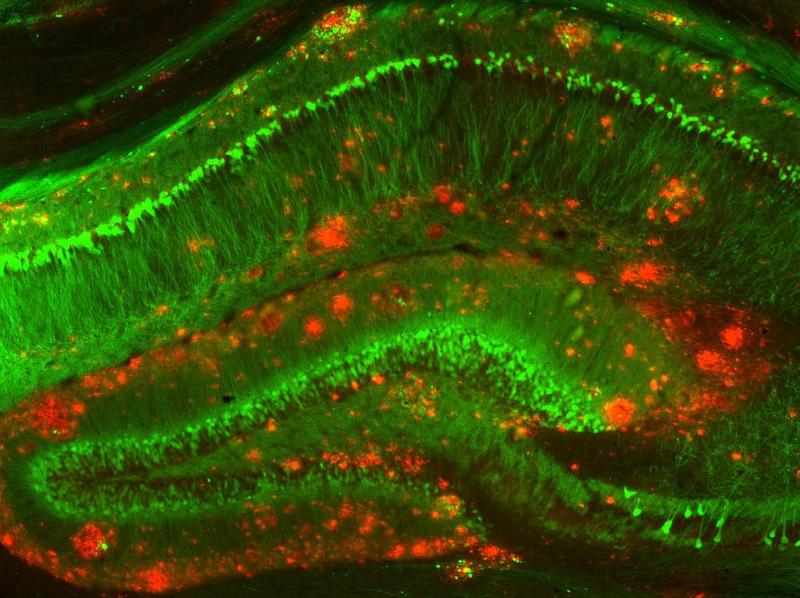
Members of the Duke Neurology Department contributed to 14 new peer-reviewed studies this October, advancing our understanding of or ability to treat Parkinson’s disease, Alzheimer’s, stroke, and other conditions. Laurie Sanders, PhD, and Claudia Gonzalez Hunt, PhD, advanced our understanding of the links between mitochondrial DNA damage and Parkinson’s disease, providing a potential avenue for future therapies. Andy Liu, MD, contributed to a study that compared how changes in the structure of the eye differ between patients with Alzheimer’s, mild cognitive impairment, and healthy individuals. Tatiana Segura, PhD, was the senior author of a study discussing how the injection of hydrogel biomaterial scaffolds to the brain after stroke may improve brain plasticity and endogenous repair. And Andrew Spector, MD, discussed the founding, mission, and future plans of the Society of Black Neurologists in a short article in Lancet Neurology.
Read more about those articles, and find links to the original research, below.
General Neurology
- The Society of Black Neurologists (SBN) was founded almost two years ago to foster discussion, mentorship, and camaraderie among Black neurologists.Since then it has grown to more than 200 members worldwide and has organized in-person events and webinars. First author Andrew Spector, MD, and colleagues discuss the SBN and its goals for the future in the latest issue of Lancet Neurology. Read that article here.
Memory Disorders
- A new American Journal of Ophthalmology study that advanced our understanding of how the choroidea differs in healthy individuals, those with mild cognitive impairment, and those with Alzheimer’s disease. Andy Liu, MD, contributed to the study, which is available here.
Epilepsy, Clinical Neurophysiology, and Sleep
- A new article in the Journal of Clinical Neurophysiology answers questions about double train transcranial electrical stimulation (dt-TES) for motor-evoked potentials (MEP). Senior author Aatif Husain, MD, first author Emily Kale, and Michael Lutz determined that MEP amplitudes benefited the most from asymmetric dt-TES with 2 + 7 pulses. Read that article here.
Neurocritical Care
- Neurocritical care fellow Vyas Viswanathan MD, contributed to a retrospective review of 152 patients with inflammation due to cerebral amyloid angiopathy. The team found evidence that corticosteroid-treatment leads to clinical and radiological short-term improvement for the condition. Read that study in the Journal of Neuroimmunology.
- A new case study offers insights and understanding of the potential for spinal cord stimulation as a possible treatment for paraplegia. A team including Saurabh Sinha, MD, Dana Lott, DPT, and Emily Kale discuss the case of an individual with chronic complete L1 paraplegia and chronic pain who received spinal cord stimulation implantation, noting his progress over the next year and a half. Read the full study in Spinal Cord Series and Cases.
Translational Brain Sciences
- New strategies are urgently needed to treat neurological deficits caused by stroke. Senior author Tatiana Segura, PhD, and colleagues discuss how the injection of hydrogel biomaterial scaffolds to the brain after stroke may improve brain plasticity and endogenous repair in a video article for the Journal of Visualized Experiments. View that article here.
- The arrival of effective treatments for Alzheimer’s disease would have profound implications for the way we diagnose, study, triage, and allocate resources to patients with the condition. Ornit Chiba-Falek, PhD, was the senior author of a study that discusses what those treatments might mean for caregivers, clinicians, researchers, and the healthcare system at large. Read that discussion in Life Sciences, Society and Policy.
- Mitochondrial DNA damage may be a sensitive measure of altered kinase activity in patients with Parkinson’s disease, according to a new article by lead authors Laurie Sanders, PhD, Claudia Gonzalez-Hunt, PhD, Catherine Toste, and colleagues. By providing an extended profile of LRRK2 kinase modulation, this finding may provide a biomarker-guided entry into clinical trials for Parkinson’s. Read that Scientific Reports article here.
- A new article by lead author Alexandra Badea, PhD, and colleagues combined MRI and micro CT studies in an animal model of microcephaly. Their study shows that lack of the GIT1 protein results in skull shape abnormalities, that are associated with brain atrophy, white matter, and cortical layer deficiencies. The team used clustering of volume covariance adjacency matrices to identify vulnerable brain region networks that change in a concerted fashion. Read that article in Magnetic Resonance Imaging.
Stroke and Vascular Neurology
- A new review article discusses carotid webs, a common mechanism for stroke, particularly for younger patients without vascular risk factors. First author Brian Mac Grory, MD, and colleagues discuss the origins, visualization strategies, and management of this condition, which appears in the Journal of Neurology, Neurosurgery, and Psychiatry.
- Mac Grory also contributed to a new Neurology article examining impact of delirium on withdrawal of life-sustaining treatment after intracerebral hemorrhage. The single-center cohort study found that delirium was associated with withdrawal of treatment after intracerebral hemorrhage regardless of when it occurs. Read that article here.
- A team including Ying Xian, MD, PhD, investigated whether the Centers for Medicare and Medicaid’s elimination of trial admissions and the initiation of documentation requirements limited inpatient rehabilitation facility access while increasing skilled nursing facility (SNF) utilization compared to home discharge (HD) in ischemic stroke (IS) patients. Read that article here.
Neuromuscular Disease
- Lisa Hobson-Webb, MD, was part of a group that developed and tested a 12-week respiratory muscle training program to address progressive respiratory muscle weakness in late-onset Pompe disease (LOPD). Read the results of their sham-controlled clinical trial in Neuromuscular Disorders.
- In the latest issue of Muscle and Nerve, a team including Don Sanders, MD, used Extrapolated‐Reference‐Values‐Procedure (E‐Ref) to compare data with the recently‐published reference‐value for concentric electrode jitter. The team found the E-Ref jitter cut-off value results were not significantly different from the reported reference values. Read that story here.